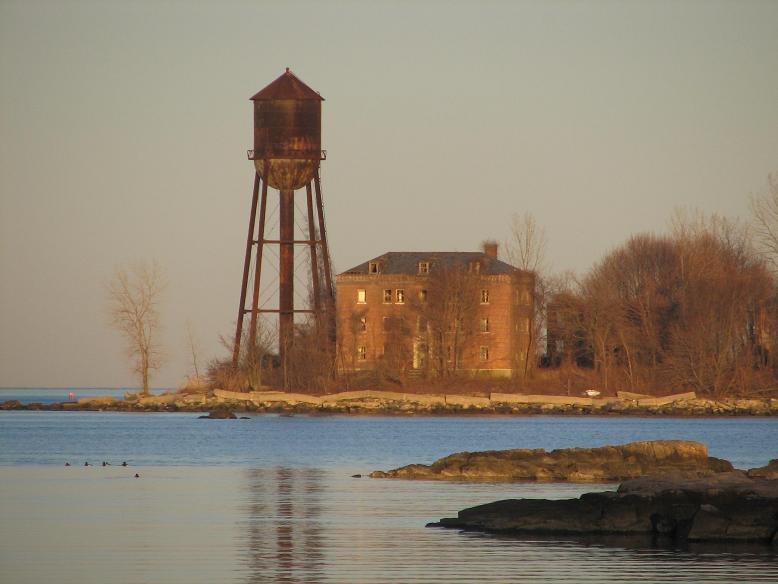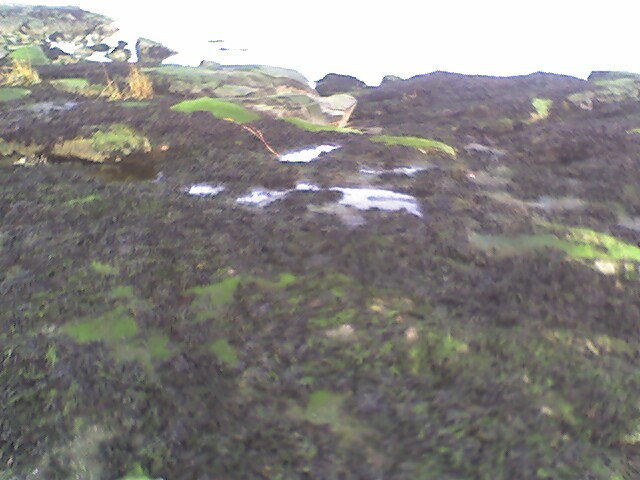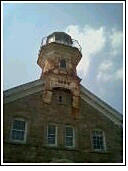

Long Island Sound has a shorter history than you might imagine. Prior to the ice ages, Long Island Sound was probably a valley formed by one or possibly two rivers leading out to a very different coastline than the one we know today.
The ice ages changed all of what we now know as the northeast
coast. Ice sheets came again and again, pushing a wall of ro
 1000 feet or more high as they slowly pulled back. The sea levels
were so far below the current ones that the sea shore was still almost 100 miles away. The flooded area lasted for
approximately 3000
years until it broke through a wall in the terminal moraine that is now "The
Race" at the end of Long Island. The lake drained into the sea still many
miles distant but drawing ever nearer as water formerly trapped in the ice
sheets all over the northern hemisphere returned to the oceans. For at least
1000 years the area
was free of water. Finally, the sea began to approach from the south and
water again filled the Sound, this time for good, about 8000 years ago.
By that time, Native Americans had been in the area for at least several
thousand years. They had a front row seat to watch the sound itself form. The sea
levels then stabilized enough for marshes to grow along the
shore and the area at last took the form that we now know.
1000 feet or more high as they slowly pulled back. The sea levels
were so far below the current ones that the sea shore was still almost 100 miles away. The flooded area lasted for
approximately 3000
years until it broke through a wall in the terminal moraine that is now "The
Race" at the end of Long Island. The lake drained into the sea still many
miles distant but drawing ever nearer as water formerly trapped in the ice
sheets all over the northern hemisphere returned to the oceans. For at least
1000 years the area
was free of water. Finally, the sea began to approach from the south and
water again filled the Sound, this time for good, about 8000 years ago.
By that time, Native Americans had been in the area for at least several
thousand years. They had a front row seat to watch the sound itself form. The sea
levels then stabilized enough for marshes to grow along the
shore and the area at last took the form that we now know.
Many Native American groups inhabited the shores of what are
now Westchester, Connecticut and Long Island. The name "Connecticut," in
fact, comes from a Mohegan word meaning "long river" or "long tidal river." The first
 European
recorded to have reached the area was Adriaen Block, a Dutch navigator who entered
the western part of the Sound in 1614.
European
recorded to have reached the area was Adriaen Block, a Dutch navigator who entered
the western part of the Sound in 1614.
Some of the islands in the Sound have history of their own worth telling. David's Island was once a Civil War Era hospital for injured soldiers. Potter's Field, the New York City graveyard for burial of the indigent or unclaimed, final resting place for some 600,000 souls over the years, is on Hart Island. F. Scott Fitzgerald set his most famous novel, The Great Gatsby, along the Sound and Theodore Roosevelt lived along its shore in Oyster Bay.
Use of the information in this guide is at your own risk. Please read our disclaimer.
Copyright 2005 - by Jacob Tanenbaum. All rights are reserved.